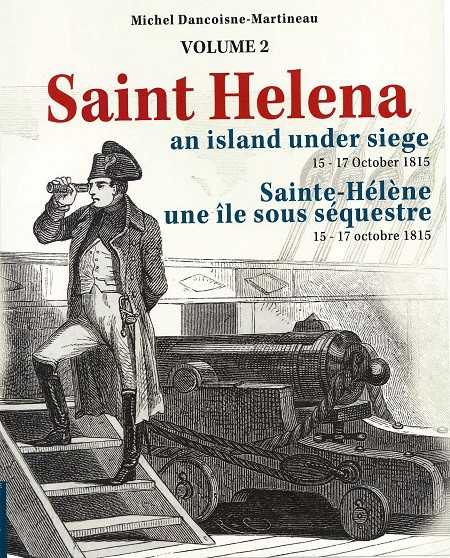In this the second volume in a series of twelve, the director of the French Domains of St Helena, Michel Dancoisne Martineau, asks two questions. Why was this small island chosen as the place of detention for Europe’s most wanted prisoner? And what exactly was the island like when Napoleon landed there on 15 October 1815? Written using archive material, some of which never before published, the book comprises eighteen sections or chapters. An early part describes in full detail the characteristics of the island as described by contemporaries (some sources are quoted in full), noting the topography and organisation of the island and its resources. And a later section, one of the most complex and interesting chapters, is on how the island was in effect commandeered from the British East India Company by the British government. Other ground-breaking subjects include the small but heterogeneous population (made up of settlers, slaves, the British military and their families, the Chinese and the Lascars) as well as the complex and indeed expensive logistics put in place to accommodate the prisoner and his entourage. Lavishly illustrated, this book transports us back in time to the island of St Helena as it would have been when Napoleon landed there 200 years ago. (Rebecca Young).
Publisher’s presentation:
“On the evening of 14th October, Napoleon saw the silhouette of the island of which he knew little, apart from the fact that it was “very high up and very healthy[1]”. After exactly three months on boats, one always feels a certain impatience to tread on a new land. But Napoleon needed even more patience in Saint Helena as, in fact, everything was administratively reorganised around his captivity. However, thanks to the administrative and management skills of Sir George Cockburn, everything was ready for him to disembark in just two days. But what was St. Helena like on 15th October 1815? And why St. Helena? In this second volume, Michel Dancoisne-Martineau answers these two questions by collecting, organising and using the reports and the social, economic and financial data he has at his disposal. Without these prior socio-economic studies, it would have been very difficult to understand the years of exile, and some of the decisions taken in those years which seem incomprehensible today. In the third volume, we will be continuing the story of Napoleon arriving on the island, and his first fifty-three days spent with the Balcombe, at the Briars”.
[1] Letter of 23rd September 1805 – No. 10867 – General Correspondence of Napoleon Bonaparte, Fondation Napoléon, t. V
This book can be bought online here or at the Longwood House giftshop on St Helena.
It is part of the collector Series of twelve volumes Napoleon and St Helena, the End of an Emperor
Each volume will be printed in a limited edition of 1,000 copies.
- Volume 1 – Napoleon and Saint Helena (1800 to 15 October 1815)
- Volume 2 – Saint Helena, an island under siege (15 to 17 October 1815)
- Volume 3 – “The Briars” – Napoleon at the Balcombes’ Home (18 October to 10 December 1815)
- Volume 4 – Exile at Longwood House under the guard of Sir Hudson Lowe (10 December 1815 – 14 April 1816)
- Volume 5 – Exile at Longwood House under the guard of Sir Hudson Lowe (15 April 1816 to 21 November 1818)
- Volume 6 – Exile at Longwood House under the guard of Sir Hudson Lowe (22 November 1818 to 5 May 1821)
- Volume 7 – Napoleon’s tomb on Saint Helena
- Volume 8 – On the margins of the exile; Ascension Island, Tristan da Cunha and Longwood New House
- Volume 9 – The main actors of the exile
- Volume 10 – Between Cape Town and Brazil, the mysteries and secrets of Saint Helena
- Volume 11 – Sir Hudson Lowe, the dishonoured of Saint Helena
- Volume 12 – A visit to Longwood House


